I'm looking for a way that the ESP8266 (or alternative, like an Attiny85 with an RF module) is only turned on once a reed switch (or similar sensor) has been triggered.
The problem is that the ESP8266 should have just enough time to power on and send a message over the Wi-fi network. The reed switch could close too fast for the device to send a signal.
Are there any components I can use to add a minimum power time before the reed switch (or power, somehow) is closed again?
The purpose is to keep the batteries for a long time while also notifying when the reed switch is activated.
